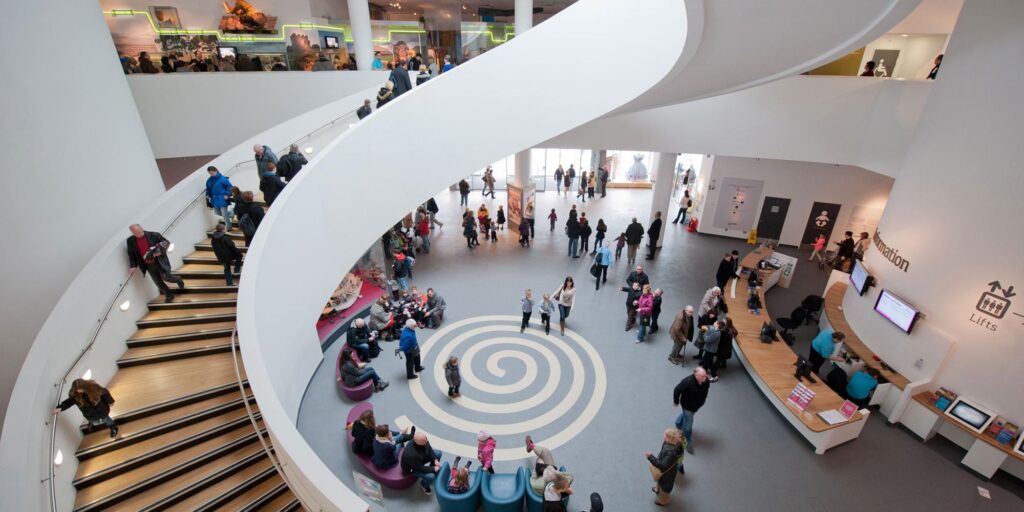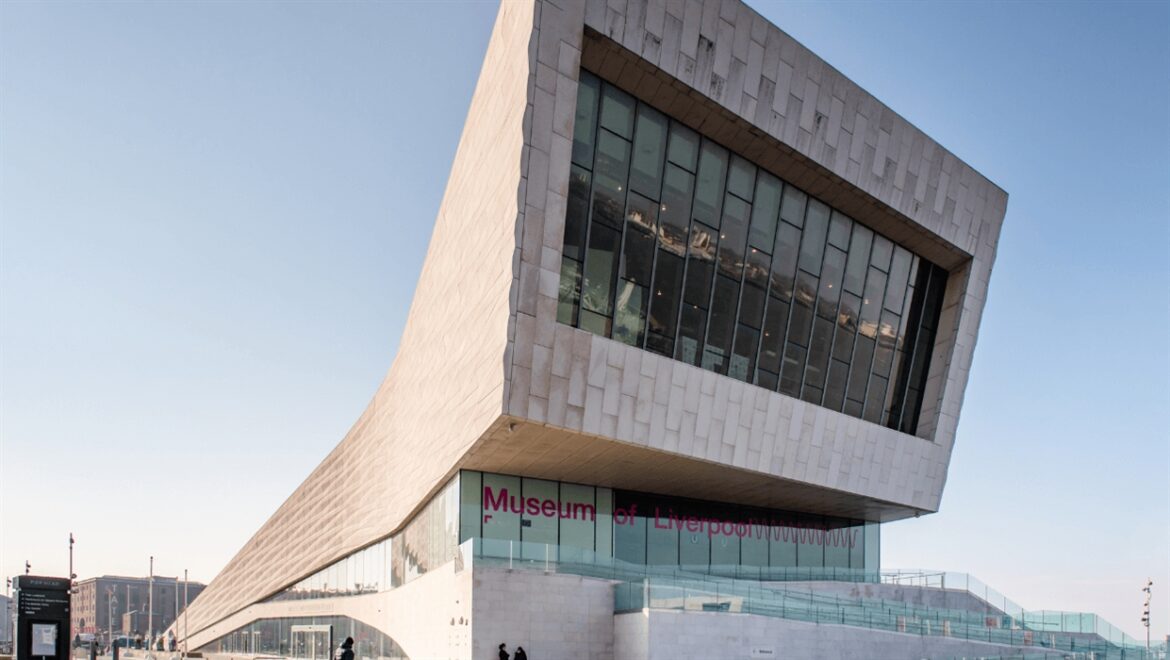Introduction
The Museum of Liverpool, located at the waterfront of the historic Pier Head, is a landmark institution that showcases the rich history, culture, and identity of one of the United Kingdom’s most iconic cities. Opened in 2011, the museum is the largest newly built national museum in the UK for over a century, designed to reflect Liverpool’s unique character and its contribution to the world in areas ranging from maritime trade to popular culture.

Liverpool has long been a city of global significance, owing to its strategic location on the River Mersey, its maritime heritage, and its role as a hub of industry, migration, and culture. The Museum of Liverpool was conceived as a comprehensive institution to capture this complexity, celebrating the city’s past, present, and aspirations for the future. This essay explores the museum’s history, architecture, galleries, exhibitions, educational role, and its impact on Liverpool as a cultural destination.
Origins and Purpose
The Museum of Liverpool was developed by National Museums Liverpool, an organization responsible for managing several of the city’s prominent cultural institutions, including the Walker Art Gallery, World Museum, and Merseyside Maritime Museum. Before the establishment of the museum, Liverpool lacked a single institution dedicated to telling the story of the city as a whole.
The project was commissioned to create a museum that would:
- Celebrate Liverpool’s unique history and identity.
- Serve as a cultural hub for residents and tourists.
- Highlight the city’s contributions to industry, the arts, sport, and social change.
- Preserve and display collections relating to the people of Liverpool.
The museum’s location at the Pier Head, part of the UNESCO World Heritage Maritime Mercantile City (2004–2021), was symbolic, placing the institution at the heart of the city’s historic waterfront and aligning it with the Three Graces—the Royal Liver Building, the Cunard Building, and the Port of Liverpool Building.
Architecture and Design
The Museum of Liverpool was designed by the internationally acclaimed architectural firm AMC Architecture, in collaboration with Feilden Clegg Bradley Studios. Its design reflects both modern innovation and sensitivity to Liverpool’s historic character.
Key Architectural Features
- Wave-Inspired Design:
The museum’s exterior is shaped to evoke the sense of water and movement, reflecting Liverpool’s maritime heritage. Its sweeping lines and terraces resemble the curves of waves, creating a dynamic visual link with the River Mersey. - Panoramic Views:
Large windows provide stunning views of the waterfront and the city skyline, including the Three Graces and the Albert Dock. These vistas connect the museum’s interior experience to Liverpool’s iconic landscape. - Use of Materials:
The building employs sandstone, glass, and metal cladding to harmonize with the surrounding historical architecture while embracing modernity. Its robust yet transparent design allows it to feel open and inviting. - Sustainability:
The museum incorporates environmentally friendly features, including energy-efficient systems, natural lighting, and sustainable materials, reflecting a modern approach to architecture and urban responsibility.
The design successfully marries contemporary aesthetics with the historic significance of its surroundings, making the Museum of Liverpool both a functional institution and a visual landmark.
Galleries and Exhibitions
The Museum of Liverpool comprises several permanent and temporary galleries that explore the city’s history, culture, and people. Its thematic approach allows visitors to understand the complex story of Liverpool from multiple perspectives.
Permanent Galleries
- History & People Gallery:
This gallery chronicles Liverpool’s history from its early settlement to the present day. It explores the city’s social, political, and economic development, highlighting milestones such as industrialization, maritime trade, migration, and urban growth. Artifacts, photographs, and multimedia displays illustrate daily life in Liverpool across centuries. - Making a Living Gallery:
Focused on the city’s working-class history, this gallery showcases Liverpool’s industrial and maritime past, including shipbuilding, dock labor, and the city’s role in global trade. The exhibition emphasizes the experiences of ordinary citizens and the economic forces shaping the city. - Leisure & Entertainment Gallery:
Highlighting Liverpool’s cultural contributions, this gallery examines music, sport, theatre, and popular entertainment. The influence of The Beatles, local football clubs, and artistic movements is celebrated, providing a comprehensive view of the city’s creative energy. - Liverpool and the World Gallery:
This gallery emphasizes Liverpool’s global connections, including migration, trade, and international influence. It explores the city’s links with the Americas, Europe, Africa, and Asia, illustrating Liverpool’s role as a port city with far-reaching significance. - Life & Community Gallery:
Showcasing the diverse communities of Liverpool, this gallery examines social life, housing, education, and civic activism. It emphasizes how the city’s multicultural population has shaped its identity and contributed to its vibrancy.
Temporary Exhibitions
The museum hosts a variety of temporary exhibitions that cover themes such as contemporary art, music, social history, and urban development. These exhibitions allow for flexibility and provide opportunities to engage with current issues while maintaining a focus on the city’s heritage.
Educational Role
Education is a central aspect of the Museum of Liverpool’s mission. The institution offers:
- School Programs:
Interactive workshops, guided tours, and curriculum-aligned programs allow students to explore Liverpool’s history, culture, and civic identity. These initiatives encourage learning about social change, industrial history, and local heritage. - Community Engagement:
The museum hosts events and activities for local communities, promoting inclusion, creativity, and social cohesion. Programs focus on storytelling, oral history projects, and creative arts, giving communities a voice in shaping the museum’s narrative. - Research and Scholarship:
The museum supports historical research and academic study, collaborating with universities and cultural institutions to document, analyze, and interpret Liverpool’s past. This commitment to scholarship ensures the institution remains a center for knowledge as well as tourism.
Cultural and Social Impact
The Museum of Liverpool has become a cultural anchor in the city, shaping how both residents and visitors perceive Liverpool’s history and identity.
Tourism and Economic Impact
Since its opening, the museum has attracted millions of visitors, making it one of Liverpool’s most visited attractions. It complements other cultural institutions at the Albert Dock, including the Merseyside Maritime Museum, Tate Liverpool, and The Beatles Story. This synergy enhances Liverpool’s reputation as a major cultural tourism destination and contributes significantly to the local economy.
Celebrating Diversity
The museum emphasizes the city’s multicultural heritage, exploring the experiences of migrant communities, seafarers, and working-class populations. Exhibits on Irish, African, Chinese, and other communities highlight Liverpool’s diversity and reinforce the city’s identity as a cosmopolitan port.
Civic Pride and Identity
By telling Liverpool’s story through the lens of its people, the museum fosters civic pride and awareness. Residents gain a deeper appreciation of their city’s historical significance, while visitors experience an authentic sense of Liverpool’s character and achievements.
Challenges and Achievements
Like many modern museums, the Museum of Liverpool faces challenges in maintaining relevance, updating exhibits, and engaging diverse audiences. Ensuring accessibility, integrating digital technology, and addressing the changing expectations of visitors are ongoing priorities.
However, the museum has achieved considerable success in:
- Preserving Liverpool’s tangible and intangible heritage.
- Engaging local communities in storytelling and cultural activities.
- Enhancing Liverpool’s cultural tourism profile on a national and international level.
Conclusion
The Museum of Liverpool is more than a collection of artifacts; it is a vibrant narrative of the city’s history, culture, and people. By combining innovative architecture, immersive galleries, and educational initiatives, the museum provides a comprehensive view of Liverpool’s journey from a bustling port city to a modern cultural hub.
Through its permanent and temporary exhibitions, the museum captures the city’s industrial achievements, maritime heritage, artistic contributions, and social evolution. Its emphasis on community, diversity, and education ensures that the institution remains both relevant and inspiring to residents and visitors alike.
Located at the historic Pier Head, with panoramic views of the waterfront, the Museum of Liverpool symbolizes the city’s resilience, creativity, and global influence. It stands as a testament to Liverpool’s enduring cultural significance, offering a place where history, identity, and imagination intersect. For anyone seeking to understand Liverpool, its people, and its story, the Museum of Liverpool provides an essential and unforgettable experience.

